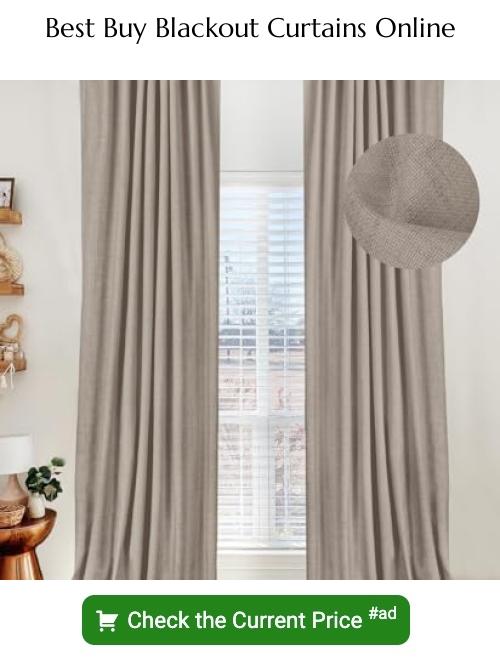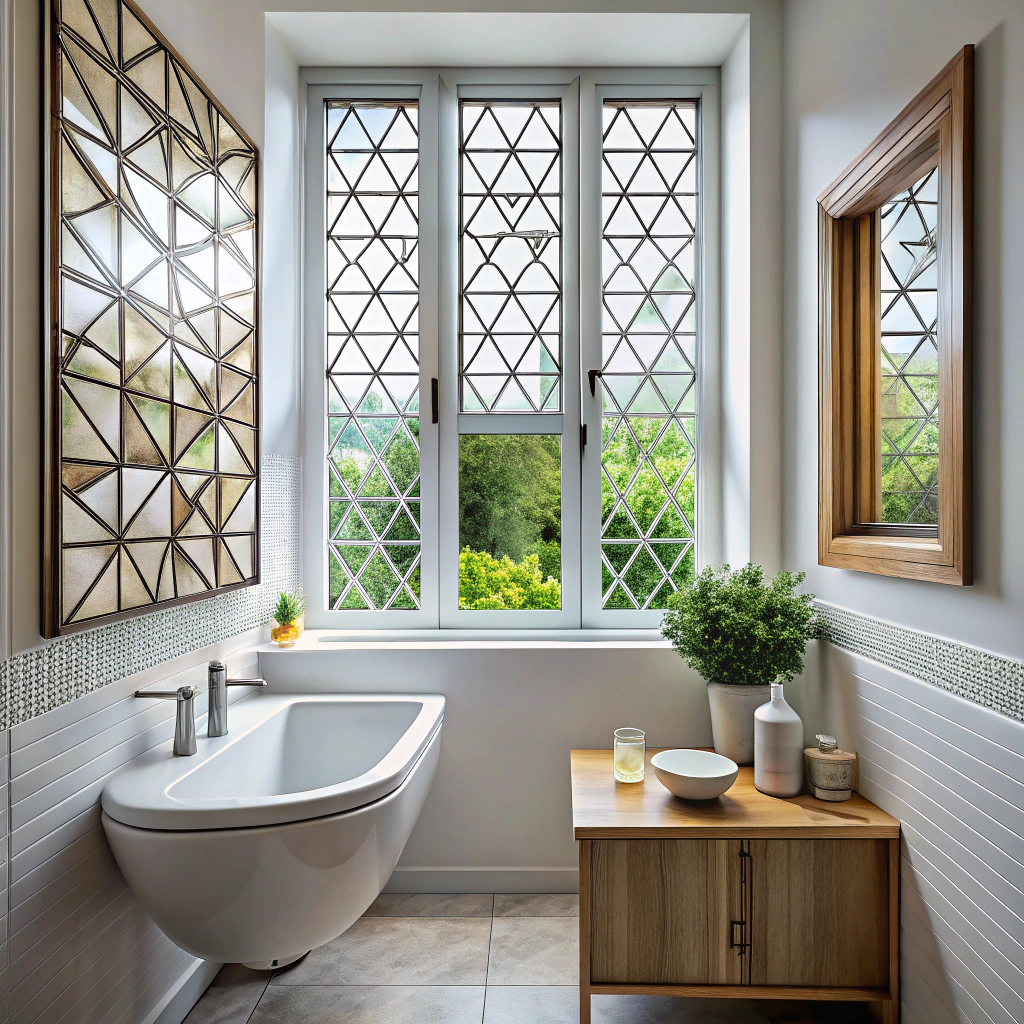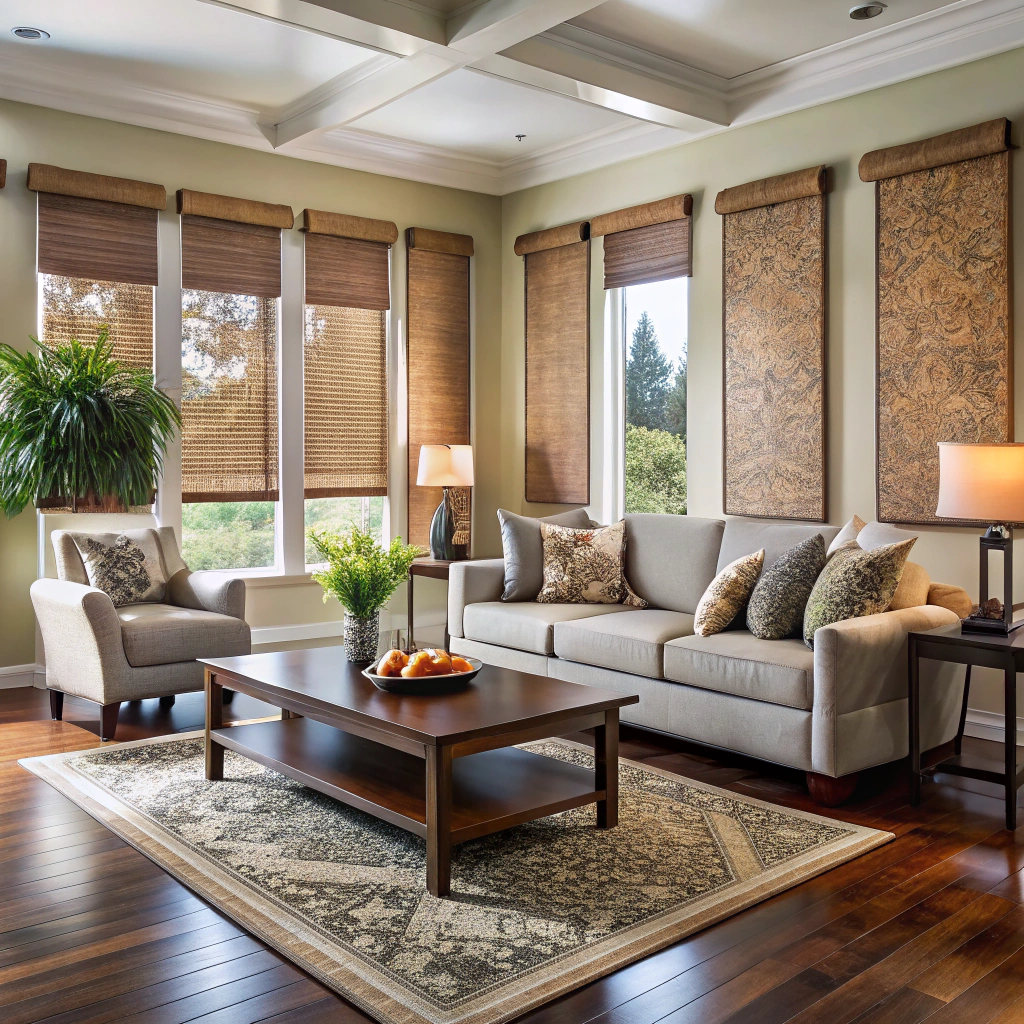Explore the diverse array of drape types to enhance your home’s aesthetic and functionality.
Drapes, also known as curtains, play a pivotal role in enhancing the aesthetic appeal of your home while providing privacy and light control. The variety of drapes available today is vast, ranging from sheer curtains for a light, romantic touch to blackout curtains for optimal privacy and darkness.
This article delves into the different types of drapes, their unique features, and where they best fit in your home. Whether you’re looking for something traditional, modern, or somewhere in between, this comprehensive guide will help you navigate your options and make the best choice for your space.
Key takeaways:
- Single Panel Curtains: Streamlined look, light-blocking function, easy installation, customizable, requires regular cleaning, possible professional installation.
- Panel Pair Curtains: Measure width, choose material and style, install curtain rod, balance light and privacy.
- Pinch Pleat Curtains: Formal, rich look, stationary, precise measurements, suitable for master bedrooms or formal areas.
- Box Pleat Curtains: Formal appearance, professional fabrication, versatile usability, design flexibility.
- Goblet Pleat Curtains: Ideal for larger fabrics, need maintenance, grand look, suit traditional or classical decor styles.
Single Panel Curtains
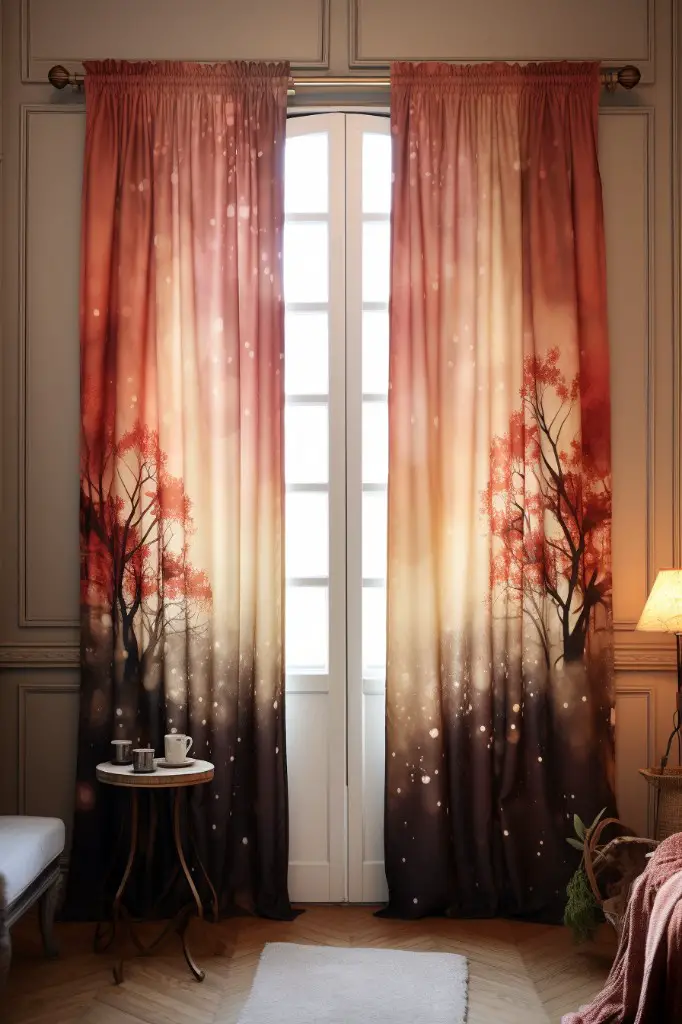
Single panel curtains incorporate an individual panel of fabric or other material that stretches across a window. These types of dressings often slide to one side of the window, providing a clean, uncluttered look. Hiring a professional for installing them can add up to the overall cost. Nevertheless, homeowners can use simple tools to hang these curtains themselves.
Key Ideas:
- Ideal for minimalist room designs due to their simple, streamlined look.
- Because they cover the entire window with one fabric, they can provide an excellent light-blocking function.
- Most effective when used on windows where just one side can be left open.
- Can be installed by homeowners using standard curtain rods and brackets.
- Available in a wide range of colors, patterns, materials, and opacity levels, offering unparalleled customizability to suit any decor style.
- May require more frequent washing or dusting, as the entire panel is exposed to the environment.
- Costs may increase if you intend to hire a professional for installation.
Consider These Steps:
- Measure your window to determine the width and length of the panel needed.
- Choose a material that complements your décor and meets your privacy and lighting needs.
- Purchase a curtain rod and brackets if not already available.
- Follow manufacturer instructions to install the brackets and rod, then hang the curtain.
- Ensure the panel can slide or be tied back easily to allow for optimal light control and window access.
- Regularly clean or dust the curtain to maintain its appearance and longevity.
Panel Pair Curtains
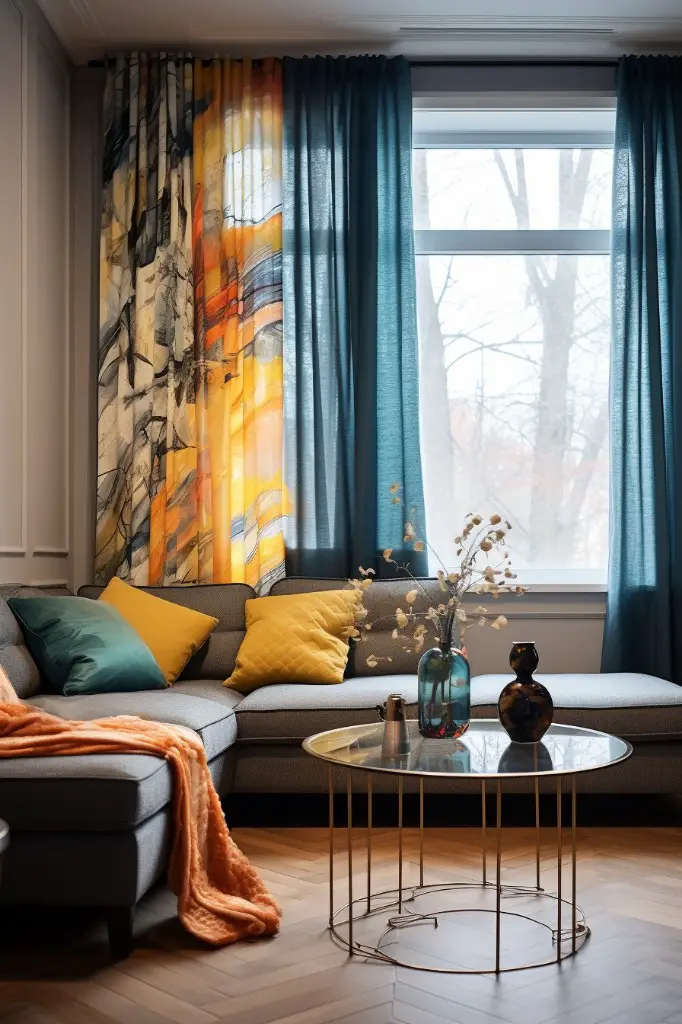
Panel pair curtains are a popular choice for large windows due to their breadth. They come in two separate pieces that hang on either side of the window, providing a balanced, symmetrical aesthetic. The dual panels allow for complete control over light and privacy levels.
Key considerations when choosing panel pair curtains include:
- Size: Measure the width of your window and add extra inches for desired fullness. The length should correspond with your preference for floor, sill, or apron lengths.
- Material: Based on your needs, choose between insulating, blackout, or light filtering materials, each offering specific benefits.
- Style: Panel pair curtains come in a plethora of designs, colors, and patterns, capable of complementing any home decor style.
Additionally, it is essential to install a curtain rod that can accommodate the width of both panels. Therefore, the rod should be wider than the window itself.
Pinch Pleat Curtains
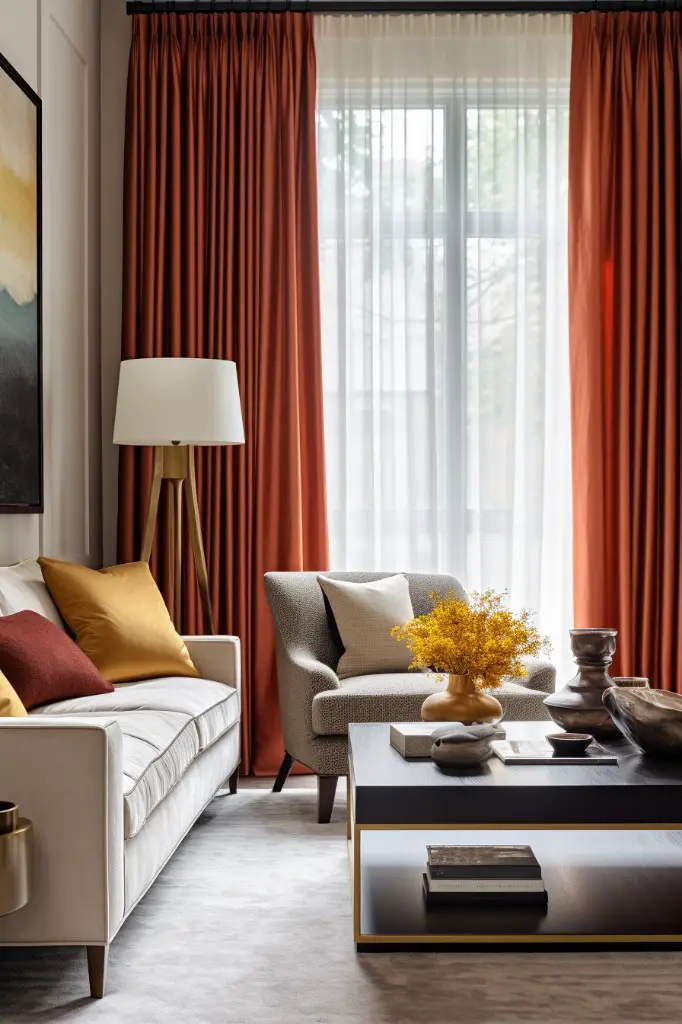
A hallmark of refinement and traditional elegance, these curtains feature tight, even, stitched pleats along the top. The pleats group in sets of two, three, or five, and are held together by stiffener to maintain their structure.
- Perfect for formal areas due to their symmetrical aesthetic.
- Lets the fabric fall into deep folds, adding a rich, luxurious look.
- Work well with decorative rods and finials since the curtains are often dangling from rings by drapery pins.
- Variations include French pleat, Euro pleat, and Goblet pleat.
- Generally stationary, designed more for looks than function; not suitable for heavily trafficked areas.
- Require precise measurements for manufacturing and installation.
- Can be hung with either a rod or a track system.
- An ideal option for a master bedroom, formal dining room, or opulent sitting area.
- Differ in fullness depending on their use, with pleats becoming deeper and more numerous for larger or more formal settings.
- Extra yardage of material potentially increases their cost compared to other styles.
This classic style has the grandeur to truly highlight the beauty of the fabric.
Box Pleat Curtains
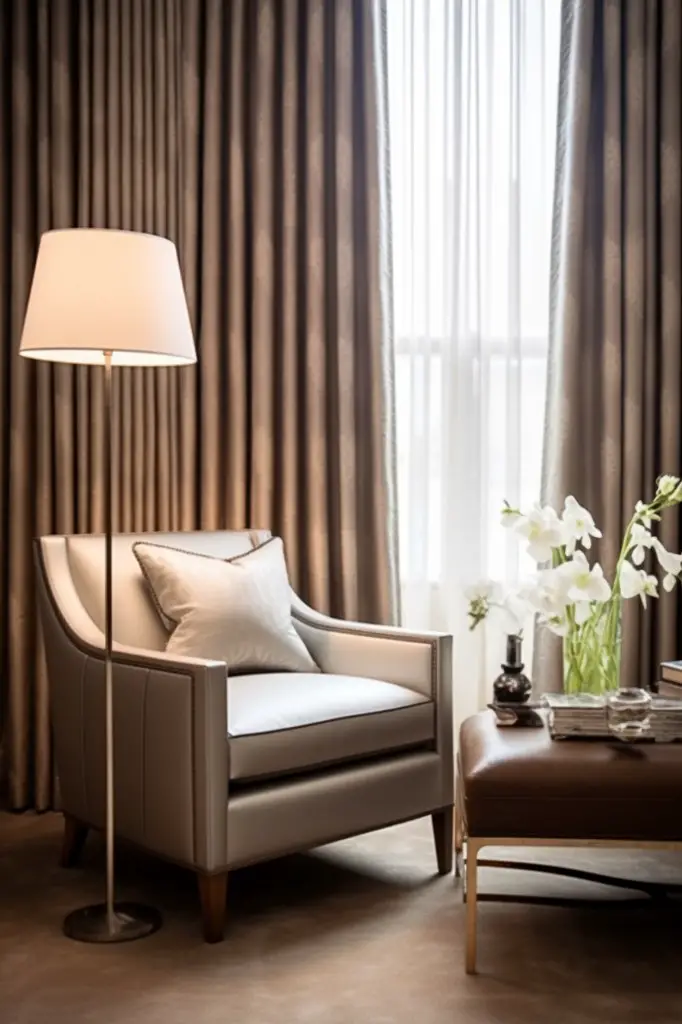
Box pleat curtains offer a tailored and neat look, ideal for formal rooms such as dining or meeting rooms. Each pleat in this design is carefully folded and sewn to provide a secure, firm, and stylish drape.
Key attributes are:
- Formal Appearance: These curtains present a uniform line of pleats, lending a neat, organized vibe to the room.
- Professional Fabrication: Their manufacturing process requires precise measurements and careful sewing, ensuring high quality and durability.
- Versatile Usability: They are suitable for both decorative and functional purposes.
- Design Flexibility: Available in a multitude of fabric options, colors, and patterns, providing a wide spectrum of design possibilities.
Primary considerations while opting for box pleat curtains are:
- Matching the Room’s Decor: Choose a fabric and color that complements the existing style and theme of the room.
- Proper Installation: Ensure that the curtain rod is installed firmly to support this relatively heavy curtain style.
- Regular Maintenance: As the stitched pleats can attract dust, regular cleaning is recommended to maintain the curtain’s appearance.
Goblet Pleat Curtains
Goblet Pleat Curtains feature a row of goblet-shaped pleats at the top. The structure has a round, gaping opening, resembling the shape of a wine goblet. Addressed to elegance, these curtains are generally used in formal areas like dining rooms and living rooms.
- Ideal for larger, heavier fabrics. Lighter fabric can lose the shape of the pleat.
- Maintaining the shape of the goblet pleats is crucial. For this, stuffing with tissue paper or cotton can help.
- These curtains require more fabric. They are usually wider and thicker due to the volume added by the pleats.
- It’s paramount to clean them professionally. Washing can ruin the shape and structure of the pleats.
- Goblet pleats are normally paired with curtain rings and poles for hanging.
- Given their formal and grand look, they suit traditional, Victorian, or classical decor styles.
- Opting for lined goblet pleat curtains can provide insulation and block out light efficiently.
- Curtain tiebacks or holdbacks can enhance the visual appeal of goblet pleat curtains by elegantly gathering the fabric at the sides.
Pencil Pleat Curtains
Adorned with tight, narrow folds from top to bottom, pencil pleat curtains add a refined aesthetic to any room. This design is named for its resemblance to a row of pencils set side by side.
Ensuring a snug fit, the thin pleats are adjustable. They’re affixed to a curtain track or pole using hooks, facilitating easy installation and removal. Unlike more modern styles, pencil pleats can accommodate both poles and tracks, making them a versatile choice.
Their fullness can be adjusted, allowing for a custom appearance to match your interior decor’s specific requirements. Since they’re sold in pairs, pencil pleat curtains provide a uniform and consistent look when fully drawn.
One notable characteristic is their ability to complement both traditional and contemporary styles. Regardless of your existing decor, these curtains can integrate seamlessly. They come in a variety of colors, materials, and patterns, delivering a plethora of options to suit diverse aesthetic preferences.
To maintain their distinctive look, they require a little more care. The pleated design necessitates regular upkeep to keep the folds looking neat and uniform. Incorporating these steps will ensure their longevity:
- Regular gentle vacuuming maintains cleanliness without disturbing the pleats.
- Hand washing, or dry cleaning depending on the fabric, is recommended as the best way to clean them.
- Ensure they’re completely dry before rehanging to avoid mildew.
- Take care to re-form the pleats when hanging to preserve the pencil style.
Grommet Curtains
Grommet curtains, often called eyelet curtains, are appreciated for their modern, clean look. Large rings known as grommets are installed into the curtain’s top fabric, which are then threaded through a curtain rod with ease.
Effortless Movement: Grommet curtains slide without any friction, making them an excellent choice for regular use.
Styles Fit for Modern Spaces: Because of their minimalistic design, they are ideally suited to contemporary or industrial-style settings.
Maintenance: They are easy to clean and require minimal care. A soft brush can take care of any accumulated dust.
Installation: When installing, the curtain rod is threaded through the grommets. For optimal look, a rod with a diameter smaller than the grommet hole will be ideal.
Light Control: Depending on the fabric chosen, grommet curtains control the level of sunlight that filters into the room.
Wide Variety: Grommet curtains come in various styles, finishes, and sizes, providing a wide selection for every taste.
Curtain Material: They are generally made with heavier fabrics like canvas or velvet due to their durability and structure.
Understand the size and nature of the window, primarily the curtain rod, before choosing your grommet curtain to ensure a proper fit and function.
Rod Pocket Curtains
Rod Pocket Curtains, often known as cased heading curtains, naturally drape themselves. A captivating aspect of interior design, they come with a sleeve at the top, large enough for a curtain rod to pass through.
Construction and Design: The rod pocket, typically one to three inches wide, is stitched at the top of the curtain fabric. This design forms a ruche effect when hung, adding a luxurious feel to the curtain panels.
Installation: Easily installable by sliding the rod through the pocket and hanging the rod on the brackets. No hooks or rings are required for this curtain style, reducing associated hardware costs.
Versatility: Suitable for a variety of rooms, including bedrooms, living rooms, and kitchens. They shine in traditional settings thanks to their elegant style.
Light Control: Moderate-to-heavy light-blocking capabilities, perfect for creating a cozy and ambient atmosphere.
Variations: Can be complemented with a sheer curtain behind for a layered, regal look.
Remember that this style doesn’t slide as smoothly due to the rod-to-fabric contact. If frequent opening and closing are sought, other options might be a better fit. Maintenance primarily involves regular gentle vacuuming and careful washing as directed by fabric care instructions.
Tab Top Curtains
Tab top curtains stand out with their distinctive loops on the top edge, accommodating the curtain rod. These loops or “tabs” are a part of the curtain itself, creating a casual and relaxed look without the need for additional hardware.
Made mostly from light to medium weight fabrics, these curtain types are suited best for rooms that require moderate light control and privacy. For instance, a living room or a kitchen might benefit from the practicality and decorative appeal of tab top curtains.
However, it’s worth noting that due to the exposed top part of the curtain rod, tab tops aren’t ideal for windows that are frequently opened or closed. They are best suited for stationary curtains as the friction can cause the tabs to wear down quicker.
In terms of design, these curtains create a billowing effect that effortlessly adds a touch of drama to any room. They are versatile and can be made with various fabrics and prints to suit any interior style.
When it comes to installing tab top curtains:
- Measure the window’s width and add an extra 2-3 inches on both sides – this ensures the window is fully covered when the curtains are closed.
- Ensure the curtain rod is sturdy enough – the weight of the curtain will hang on it.
- Leave enough space between the rod and the window top – to prevent light seeping in.
To sum up, tab top curtains offer a relaxed vibe, are easy to install, but are best used for windows that don’t require frequent opening or closing.
Tie Top Curtains
Tie top curtains are a casual and versatile option. These types feature ribbons or fabric strips which are tied around the curtain rod, thus achieving its name. The ties not only make the curtain hanging process easy, but also add a touch of personal style with the bow-like appearance as a pleasing and homey decorative detail. It’s a popular choice for country or shabby chic styles due to its relaxed nature.
Draped as swags, bunched, or left to hang straight down, different presentations are possible.
Two-fold purpose – both functional and decorative.
Styles can range from simplistic to highly ornate.
Easily hung and adjusted for height and gathers.
Varied tie materials – fabric strips, ribbons, and more.
Excellent choice for light, breezy fabrics.
Stylish fit for relaxed settings; bedrooms, living rooms, kitchens.
Accessible options for do-it-yourself decorators.
Materials for the ties can be same as the curtain, contrasting, or complementary.
Switching out tie material presents quick and easy decor changes.
Remember safety, especially in children’s rooms – keep ties out of reach as they can pose a choking hazard.
Blackout Curtains
Blackout curtains are typically constructed with heavier fabrics, like polyester or cotton blend, making them an excellent solution to keep bedrooms dark, quiet, and cool. However, these curtains offer more than just an enjoyable sleep environment:
- They provide significant energy savings by insulating rooms against heat in the summer and cold in winter.
- Increased privacy is another feature, as they prevent anyone from seeing through windows when curtains are drawn.
- For those who enjoy watching movies or television shows on a big screen, they aid in creating the perfect cinema environment by blocking out all external light.
To correctly install blackout curtains, follow these steps:
- Measure your window width and length accurately. Always add an extra two to three inches on both sides for optimal light blockage.
- Choose your preferred style and color to match the room decor.
- Install curtain rods about four to six inches above your window frame, or as per the requirements of the curtain type.
- Make sure to dry-clean or gently machine wash these curtains, as harsh washing can damage their fabric and insulation properties.
Remember, even though blackout curtains block out light, they come in diverse styles and colors. So, you don’t have to compromise on aesthetics for functionality.
Energy Efficient Curtains
Energy efficient curtains play a dual role – improving the aesthetic of your space while also positively impacting your utility bills. Here’s how:
Acting as a barrier, these drapes regulate room temperature by insulating against cold drafts in winter and staving off heat in summer. This, in turn, reduces your reliance on heating and cooling systems.
Manufactured from heavier materials such as cotton, polyester, or a blend thereof, they are designed to provide maximum energy efficiency.
Infrared reflective coatings on some versions contribute to minimizing heat absorption, making the space more comfortable and energy-efficient.
They come in a wide array of designs, colors, and patterns to cater to diverse decor styles. So, you’re not just saving energy but also adding to your home’s aesthetics.
Installing these curtains is rather straightforward. You use them in the same way you would with any regular curtains – either hung from a rod or attached to the window frame.
Remember, sunny windows will benefit the most from these drapes. So, always consider the direction your windows face before installation.
Thoroughly cleaning these curtains regularly will maintain their efficiency. Always follow the cleaning instructions provided by the manufacturer to prevent potential damage.
Using these drapes in combination with other energy-efficient window treatments like cellular shades or blinds can augment the energy savings.
In essence, energy efficient curtains are a simple, stylish way to optimize your home’s energy usage and indoor comfort.
Cafe Curtains
Ideal for kitchens or bathrooms due to their unique design attribute, cafe curtains cover only the lower half of the window and are hung from the center of the window allowing for privacy while still letting in ample light.
- Offers a casual, informal, and cozy living aesthetic
- Ideal for spaces where complete privacy isn’t needed, yet partial privacy is required
- Easy to install, often only requiring a tension rod
- Perfect for windows that are close to a street or neighboring house
- Variety of designs available, from solid colors to playful patterns, to effortlessly match existing decor
- Enables control over natural light, brightening up the room while limiting direct sunlight
- Versatile in terms of material selection, can be made from fabrics like cotton, linen, lace or polyester
Remember, while Cafe curtains are charming and functional, they may not suit all living spaces and window types.
Light Filtering Curtains
Light filtering curtains offer the perfect blend of style and practicality. Maintaining the illumination from natural light, these curtains offer privacy without casting a room into darkness. This makes them an ideal choice for communal spaces like living rooms or kitchens, where daylight is wanted but privacy is still needed.
Made from varying levels of translucent fabrics, light filtering curtains can range from providing a hazy glow to just subtly muting the incoming sunshine. This level of customization comes from choosing the right combination of fabric weight, texture, and color, offering considerable control over the room’s ambiance.
When introducing light filtering curtains into a room:
- Evaluate the room’s natural light. South or west-facing rooms that receive overwhelming natural light might benefit from heavier or darker fabrics.
- Assess your privacy needs. Despite their openness to light, light filtering curtains can still offer privacy. Experiment with different levels of opaqueness to strike the right balance.
- Try different colors. Brighter colors can lend themselves to a more vibrant, warm glow when the sunlight hits them.
- Factor in extra features. Some light filtering curtains come with energy-efficient properties, such as thermal backing, which can help to regulate room temperature.
- Think about maintenance. Most light filtering curtains are machine-washable, but check the care instructions to be sure.
Do keep in mind, light filtering curtains won’t work for those who need absolute dark conditions to sleep. For that purpose, consider combining them with blackout curtains or lined drapes for a functional blend.
Floor Length Curtains
Traditionally seen as formal, floor length curtains actually complement a variety of room styles from casual to formal, modern to classic. These curtains hit right at the floor or slightly above, creating a clean and polished appearance.
Some key areas to consider:
- Room Style: Floor length curtains often work best in bedrooms, dining rooms, and living rooms where a more formal or elegant touch is desired.
- Function: They can help with thermal insulation and soundproofing due to their full coverage of the window.
- Fabric Type: Choose a fabric that will hang crisply for a neat look. Consider if the room needs light control or insulation.
Installation: They should hang from just above the window frame and extend down to just hit the floor. Consider professional installation for perfect height fitting.
Maintenance: Regular cleaning is required to prevent dust and dirt from accumulating at the bottom.
Puddle Length Curtains
Puddle Length Curtains serve not only a functional purpose, but are also aesthetically appealing. Here are a few key points:
- They extend beyond the windowsill, floor, or both, creating a ‘puddle’ of fabric.
- Ideal for formal rooms, due to their luxurious and dramatic aesthetics.
- Often made with heavy, sumptuous materials like silk and velvet.
- Helps in reducing drafts and can contribute to energy efficiency.
- Installation requires accuracy, the excess fabric must be evenly distributed to create an attractive, intentional puddle.
- Recommended dry cleaning due to the volume and type of fabric.
- Use tiebacks for practicality to avoid wear and tear or tripping over the fabric.
- Consider the room’s traffic before opting for these as they may not be suitable for high-traffic areas.
Remember, the look of your curtain can significantly alter the mood and style of a room. Puddle Length Curtains are a statement, and they transmit a sense of grandeur. They’re not just window coverings; they’re a design element.
Apron Length Curtains
Apron length curtains extend approximately six inches below the window sill but do not touch the floor, making them a popular option for spaces needing light to moderate coverage. Being shorter than other variations, they are ideal for preventing small children or pets from pulling on them, yet they still provide suitable privacy and light control.
- High vs Low Traffic: Suitable for high traffic areas where long drapes could be a hindrance or safety issue.
- Easy Maintenance: Requires less material, which typically results in quicker and easier cleaning.
- Versatile design: Works with almost any interior style. Ideal for kitchen and bathroom windows, but can also be used in living rooms and bedrooms.
- Window Access: Allows comfortable access to the window for opening and closing.
- Combine with Other Window Treatments: Often paired with a valance or top treatments, offering a layered aesthetic.
Window Sill Curtains
Window sill curtains extend just to the length of the window sill. They add a tidy appearance to spaces and are ideal for windows above furniture or countertops where long drapes may not be suitable.
Here are aspects to pay attention to:
- Sizing: Measure the window frame length accurately before curtain purchase to avoid short or overhanging drapes.
- Material: These curtains can be made from a variety of materials, from light sheers to thick fabrics. Choose based on the desired degree of light filtering and privacy.
- Design: Given their conspicuous position, these curtains can enhance room aesthetics significantly. Thus, consider the overall room decor while selecting designs.
- Placement: The curtain rod should be fixed slightly above the window frame to allow for seamless window operation.
- Maintenance: Regular cleaning to remove dust and prevent fabric damage is crucial, considering their position close to the window where they can accumulate dust.
Finally, while installation, ensure the curtains hang straight and flush with the window sill, not bunched up or wrinkled, for a neat appearance.
Window Scarf Curtains
Offering a touch of elegant simplicity, window scarf curtains drape easily across a rod, rendering a soft, unstructured appearance. Few key aspects include:
Versatility: Scarf curtains can be draped in various styles – simply hung, braided, or creatively looped around the rod ends.
Window Enhancement: They provide an aesthetic enhancement to windows by framing them gracefully while allowing for open view.
Light Control: While they primarily serve a decorative role, they marginally filter daylight, contributing to a room’s ambiance.
Material Variety: Available in a plethora of materials, from sheer organza to denser velvet, this type of curtain can cater to different styling needs.
Maintenance: Scarf curtains generally require dry cleaning, particularly when crafted with delicate fabrics. Verify the manufacturer’s instructions before cleaning.
Practicality: These are ideal for decorative usages rather than functional, as frequent opening and closing may disturb the pleated arrangement.
Choosing scarf curtains involves balancing aesthetics with practicality, considering how it complements the overall decor and serves its purpose in a specific space.
Consideration Factors for Drape Choice
Begin by considering the room’s function. A bedroom may require blackout curtains for better sleep conditions while a living room might benefit from light filtering curtains for a sunlit and homely atmosphere.
Next, evaluate the room’s aesthetic. The color and style of the drapes should complement the room’s existing décor. For example, a room with minimalist design might pair well with simple panel pair curtains while a room with a more opulent aesthetic could be enhanced by the richness of goblet pleat curtains.
Window size is essential. Long windows might demand floor length or puddle length curtains for an elegant look, whereas smaller windows could be adorned with window sill curtains or cafe curtains for a cozy ambiance.
Lastly, look at the hardware you have. Grommet curtains need a curtain rod, tie top curtains will need to be secured with attractive ties, while others like rod pocket or tab top curtains are happy with an ordinary rod sans any frills. The curtain’s top construction is often dictated by the type of rod you have or intend to install.
Energy efficiency may also be taken into account. Energy efficient curtains can contribute to maintaining a room’s temperature, proving to be an economically and environmentally sound choice.
Choosing the right drapes isn’t solely an aesthetic decision, but a harmonious blend of purpose, stylistic consistency, window fit, hardware compatibility, and, potentially, energy efficiency.
FAQ
What are the three different types of drapes?
The three different types of drapes are grommet, rod pocket, and pinch pleat curtains.
What are the two types of drapes?
The two types of drapes are simple and pleated draperies.
What are the different types of folds in drapery?
The different types of folds in drapery include the pipe, zigzag, spiral, diaper, drop, and half-lock folds.
What materials are commonly used in the manufacture of drapes?
Common materials used in the manufacture of drapes include cotton, silk, velvet, linen, and polyester.
How do blackout, sheer, and thermal drapes differ?
Blackout drapes are designed to block all light and noise, sheer drapes allow just enough light to permeate the room without compromising privacy, and thermal drapes effectively insulate against heat and cold to save energy.
What considerations are important when selecting drapes for different rooms?
When selecting drapes for different rooms, it’s important to consider the room’s purpose, prevalent lighting conditions, color scheme, size, as well as the occupants’ personal style and privacy needs.
Recap
